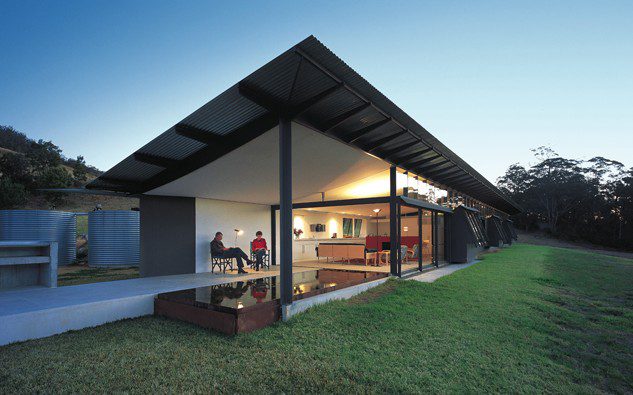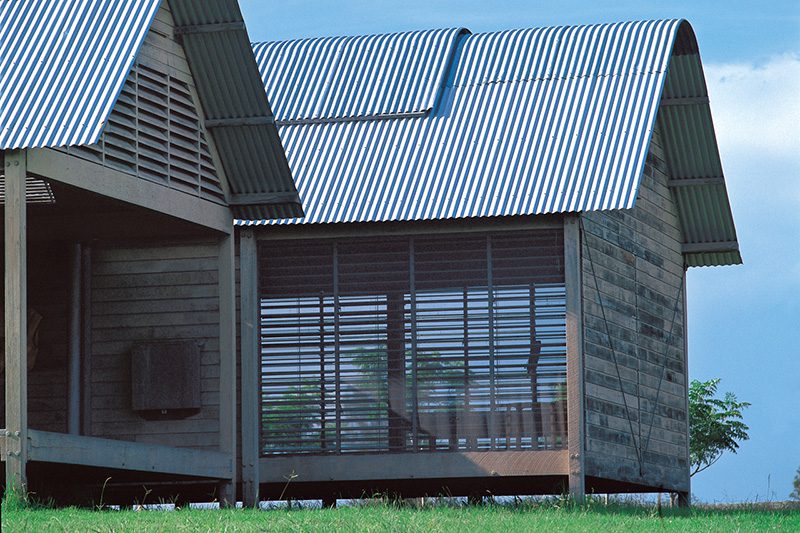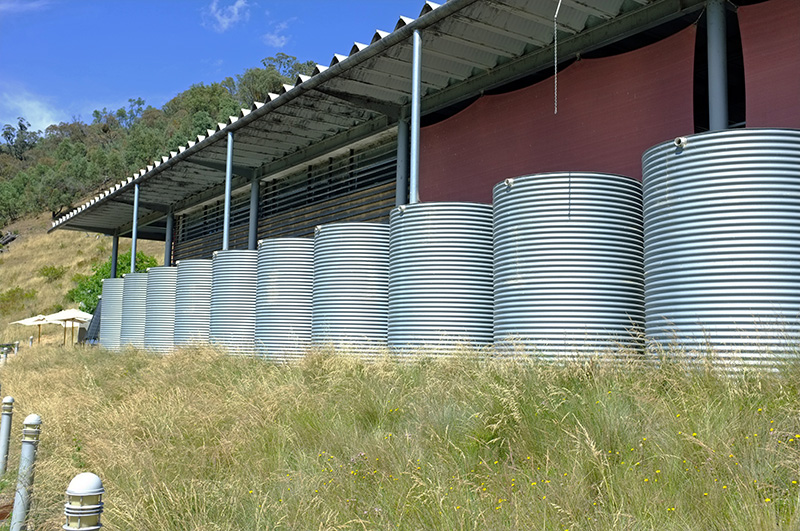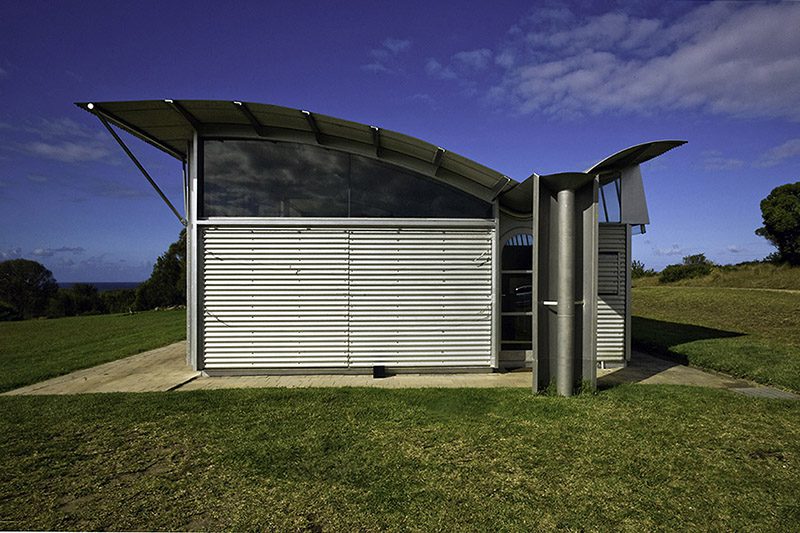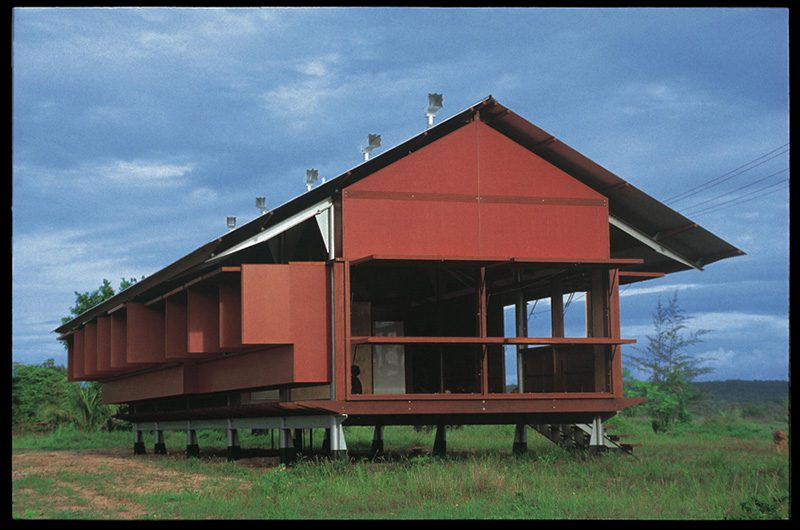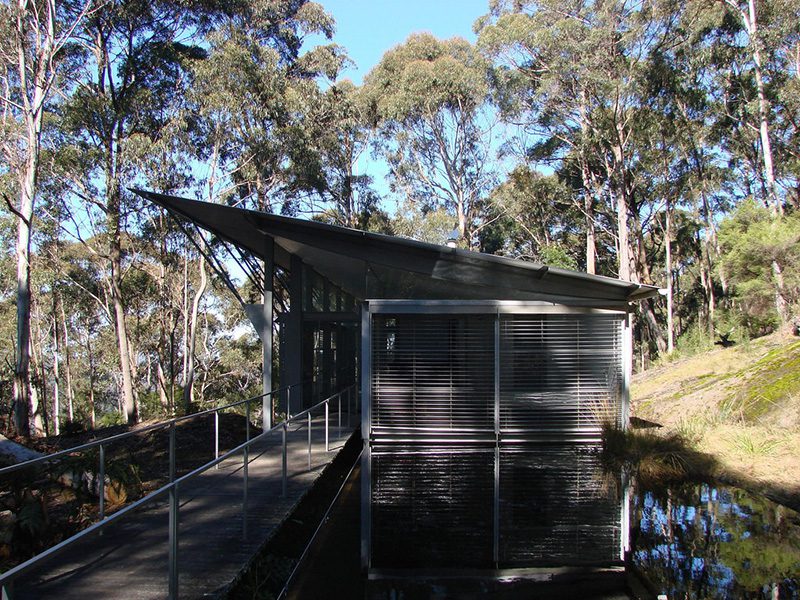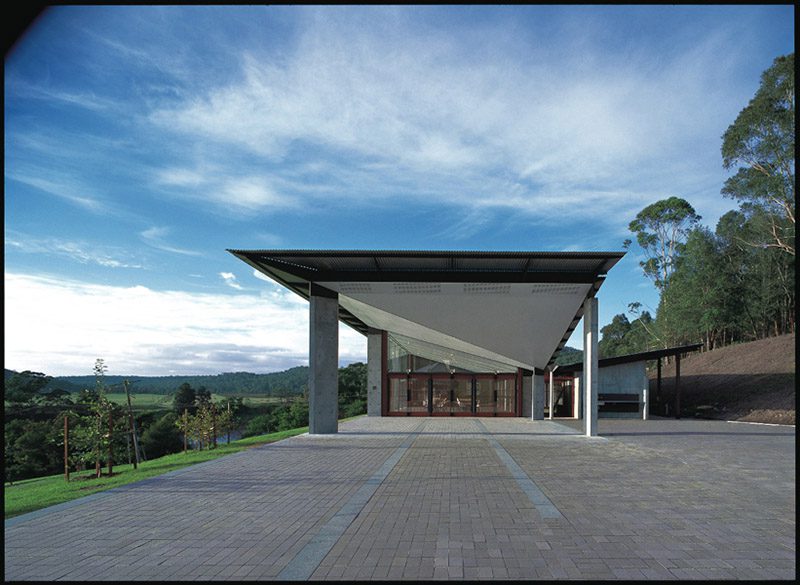ARCHITECTURE: Glenn Murcutt
 The Australian Architect Glenn Marcus Murcutt (25/7/1936- ) is noted for his design of environmentally sensitive modernist houses that respond to their surroundings and climate, as well as being scrupulously energy conscious. His houses are fine tuned to the land and the weather. He uses a variety of materials, metal, wood, glass, stone, brick and concrete. The materials are always selected with a consciousness of the amount of energy it took to produce the materials in the first place.
The Australian Architect Glenn Marcus Murcutt (25/7/1936- ) is noted for his design of environmentally sensitive modernist houses that respond to their surroundings and climate, as well as being scrupulously energy conscious. His houses are fine tuned to the land and the weather. He uses a variety of materials, metal, wood, glass, stone, brick and concrete. The materials are always selected with a consciousness of the amount of energy it took to produce the materials in the first place.
By Efi Michalarou
 Glenn Murcutt was born in London while his Australian parents were en route to the 1936 Olympic Games in Berlin. His father found success as a gold prospector in New Guinea, and Murcutt spent the first five years of his life there. The family’s home was constructed of corrugated iron and set on top of stilts to keep out water and animals, the design of this house, and of other houses built by his father, would later inform many of Murcutt’s own choices as an architect of houses and other small-scale buildings. After earning a degree in Architecture from the University of New South Wales Technical College in 1961, Murcutt spent eight years with a Sydney Architectural office of Ancher, Mortlock, Murray and Woolley, before founding his own practice. In 1970 Murcutt began a nine-year stint as a design tutor at the University of Sydney. After teaching at the University of New South Wales in 1985 and at the University of Melbourne from 1989 to 1997, he embarked on a series of visiting professorships at universities in the United States, Papua New Guinea, Finland, and Denmark. Murcutt came to feel that buildings should be able to respond to changes in conditions. He said “Buildings should open and close and modify and re-modify and blinds should turn and open and close, open a little bit without complication. They should do all these things. That is a part of architecture for me, the resolution of levels of light that we desire, the resolution of the wind that we wish for, the modification of the climate as we want it. All this makes a building live”. Glenn Murcutt was inspired by the Californian architecture of Richard Neutra and Craig Ellwood, and the crisp work of the Scandinavian architect Alvar Aalto. However, Murcutt’s designs quickly took on a distinctively Australian flavor. Murcutt’s buildings reflect his desire to maintain harmony with the environment. His houses often feature corrugated iron with the ribs laid horizontally, creating a linearity that he felt responded to the landscape instead of competing with it. As a result of his sense of a building’s functionality, few of his designs called for air-conditioning. The flow of air was controlled through the implementation of slatted roofs, screens, and blinds; wide eaves provided shelter from the sun. He is the winner of the 1992 Alvar Aalto Medal, the 2002 Pritzker Architecture Prize and the 2009 AIA Gold Medal.
Glenn Murcutt was born in London while his Australian parents were en route to the 1936 Olympic Games in Berlin. His father found success as a gold prospector in New Guinea, and Murcutt spent the first five years of his life there. The family’s home was constructed of corrugated iron and set on top of stilts to keep out water and animals, the design of this house, and of other houses built by his father, would later inform many of Murcutt’s own choices as an architect of houses and other small-scale buildings. After earning a degree in Architecture from the University of New South Wales Technical College in 1961, Murcutt spent eight years with a Sydney Architectural office of Ancher, Mortlock, Murray and Woolley, before founding his own practice. In 1970 Murcutt began a nine-year stint as a design tutor at the University of Sydney. After teaching at the University of New South Wales in 1985 and at the University of Melbourne from 1989 to 1997, he embarked on a series of visiting professorships at universities in the United States, Papua New Guinea, Finland, and Denmark. Murcutt came to feel that buildings should be able to respond to changes in conditions. He said “Buildings should open and close and modify and re-modify and blinds should turn and open and close, open a little bit without complication. They should do all these things. That is a part of architecture for me, the resolution of levels of light that we desire, the resolution of the wind that we wish for, the modification of the climate as we want it. All this makes a building live”. Glenn Murcutt was inspired by the Californian architecture of Richard Neutra and Craig Ellwood, and the crisp work of the Scandinavian architect Alvar Aalto. However, Murcutt’s designs quickly took on a distinctively Australian flavor. Murcutt’s buildings reflect his desire to maintain harmony with the environment. His houses often feature corrugated iron with the ribs laid horizontally, creating a linearity that he felt responded to the landscape instead of competing with it. As a result of his sense of a building’s functionality, few of his designs called for air-conditioning. The flow of air was controlled through the implementation of slatted roofs, screens, and blinds; wide eaves provided shelter from the sun. He is the winner of the 1992 Alvar Aalto Medal, the 2002 Pritzker Architecture Prize and the 2009 AIA Gold Medal.

